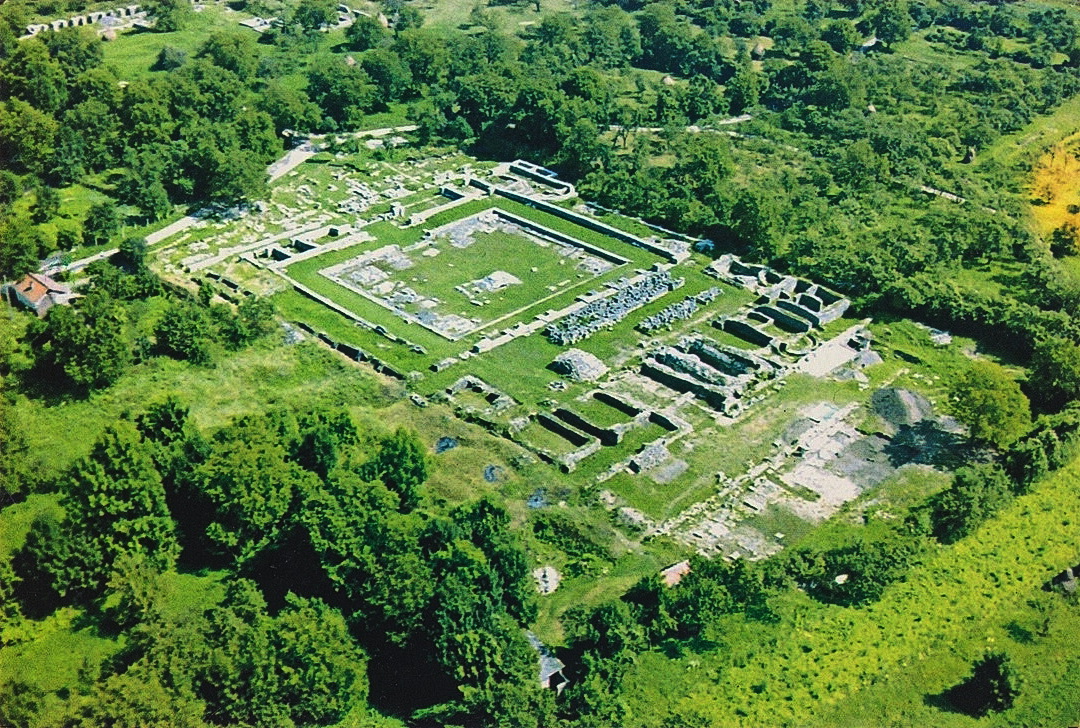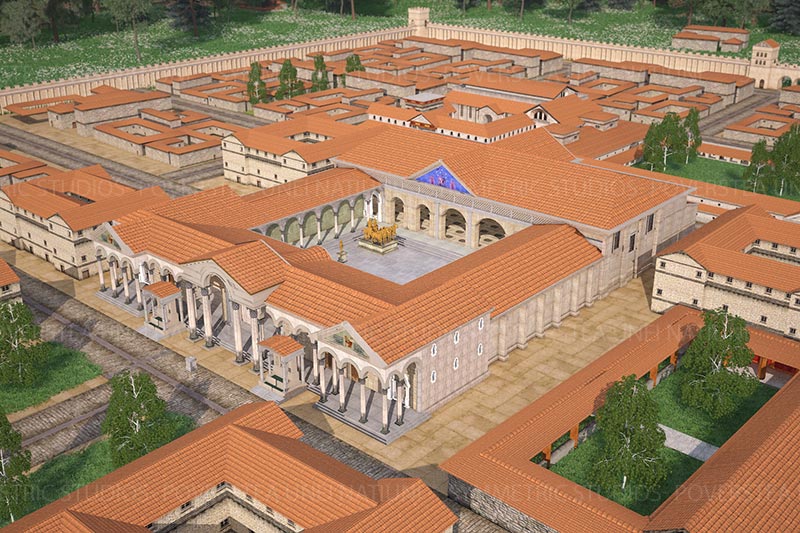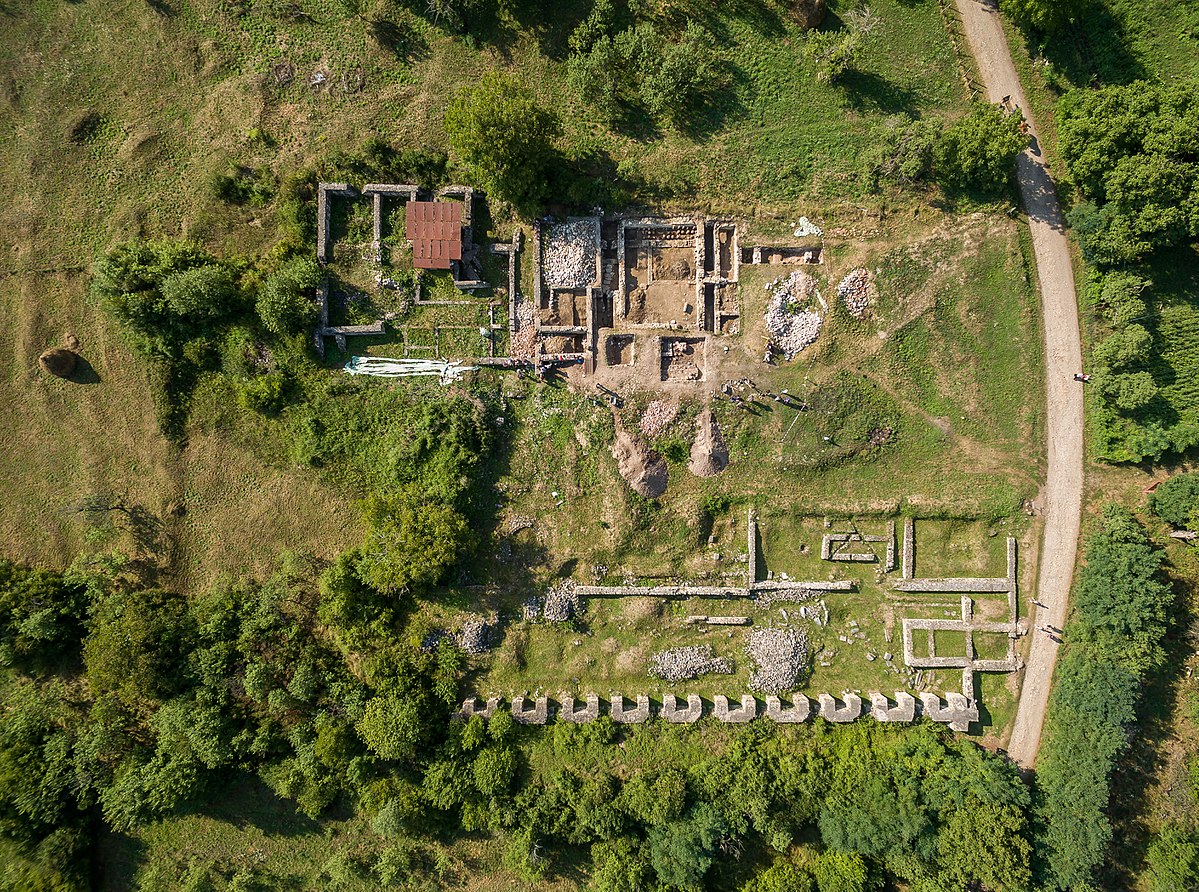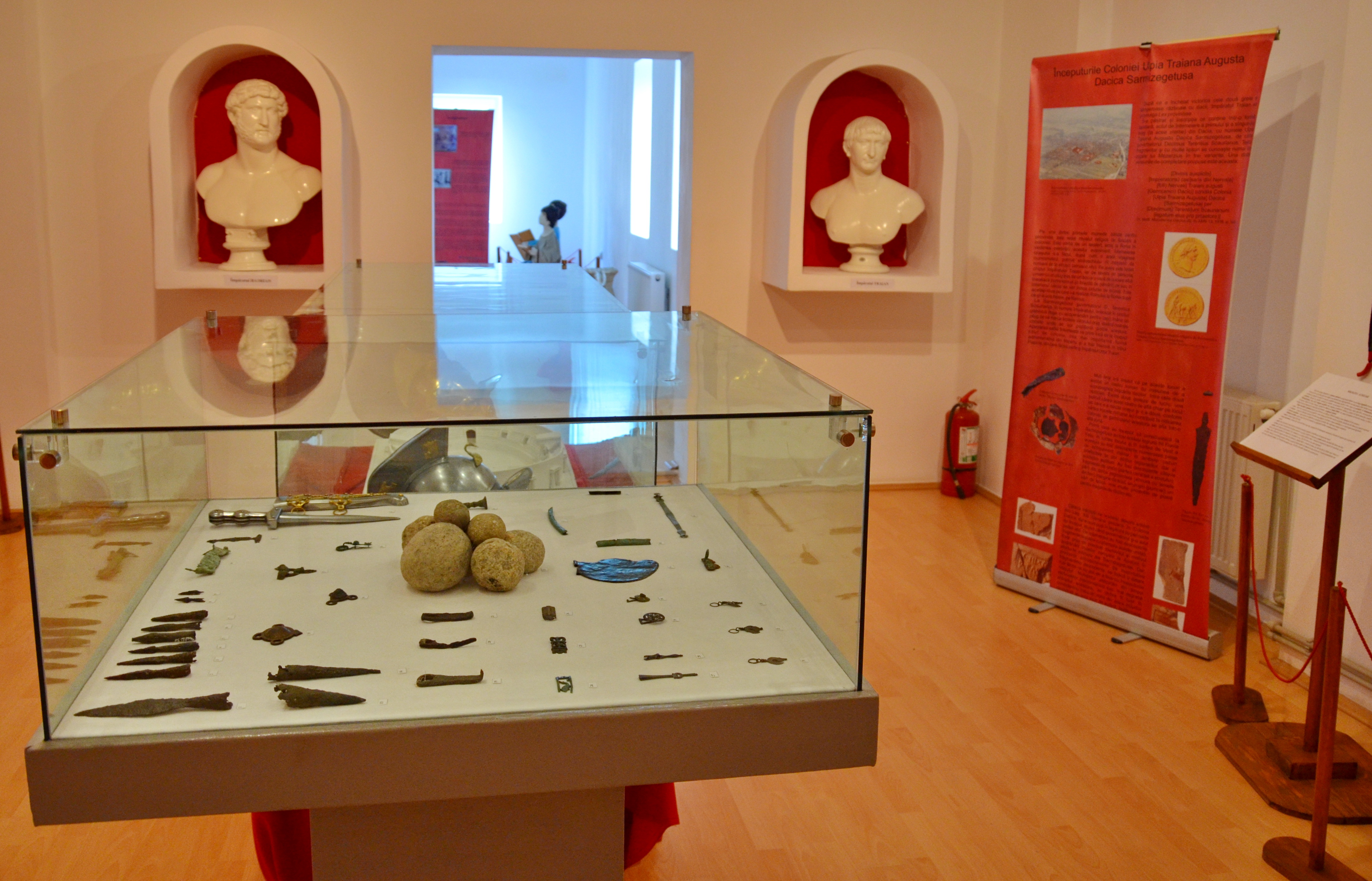Colonia Ulpia Traiana Augusta Dacica was founded shortly after the second Dacian War, as the last colonia deducta, at a strategic position, half-way between the two legionary fortresses of Trajanic Dacia, IIII Flavia and XIII Gemina, and at a crossroad of two important commercial routes towards the Danube. The settlement, covering an area of around 30 ha, is located at a distance of 8 km from Tapae, a pass between Banat and Transylvania (today known as the Iron Gates of Transylvania). The choice was based on the military and economic advantages presented by the natural barrier of the Retezat Mountains to the south and Poiana Ruscă Mountains to the north. The territory of the metropolis extended from Tibiscum to Micia and to the Jiu gorge, the city being protected by several forts: Tibiscum, Pons Augusti, Micia and Bumbești.
The settlement was established in the first years following the conquest of Dacia. In Rome, the settlement of the colony was marked by the issue of a coin, by order of the Senate, dedicated to the emperor Trajan. During the reign of Hadrian the city was renamed Colonia Ulpia Traiana Augusta Dacica Sarmizegetusa, after the capital of the Dacian Kingdom of Decebalus, situated 40 km E from the Roman city. Between 222 and 235 the colony was called metropolis. Initally Ulpia Traiana was populated by veterans of the Dacian wars, its inhabitants benefiting from ius Italicum. With about 20.000 – 25.000 settlers, the strongly fortified Ulpia Traiana was the political, administrative, financial and religious centre of the province of Dacia during the 2nd-3rd centuries. Furthermore, Sarmizegetusa was the seat of the provincial council of the “three Dacian provinces” known as Concilium provinciarum Daciarum trium.
Intensive systematic archaeological research has been carried out for more than a century within the ancient capital. As a result, numerous administrative, religious and civilian buildings were unearthed and can be visited today, such as the Forum and the Financial procurator’s office – Domus Procuratoris, the Amphitheatre and Gladiator School, the Great Temple and the temples of Nemesis, Liber Pater, Aesculapius and Hygieia, Mithras, Silvanus, the Palmyrene Temple, the Horreum, and the Glass Blowers’ Workshop.
After the walking tour of the ancient ruins, the traveller is invited to visit the site’s Archaeological Museum, housing the artefacts discovered at Ulpia Traiana Sarmizegetusa, reflecting the everyday life of its inhabitants throughout the centuries.
-

Ulpia Traiana Sarmizegetusa - aerial view
-

Forum - aerial view
-

Forum
-

Forum - virtual reconstruction
-

Inscription on the forum column
-

Domus procuratoris - aerial view
-

Domus procuratoris - recent excavations
-

Amphitheatre and area sacra
-

Temple of Nemesis
-

The Great Temple
-

Sarmizegetusa - Archaeological site Museum
-

Site Museum exhibition
-

Site Museum exhibition
-

Site Museum exhibition
-

Site Museum exhibition